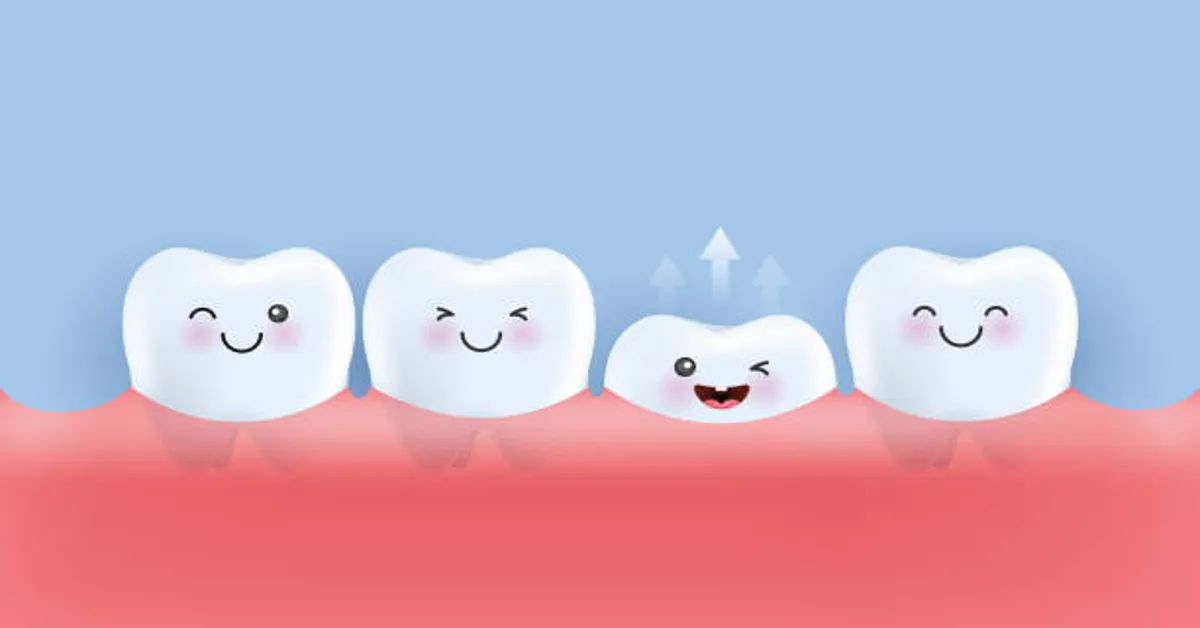A bright and confident smile is one of the most noticeable features of a person’s appearance. Unfortunately, dental veneers for missing teeth can greatly affect self-esteem, speech, chewing ability, and overall oral health. While there are several dental solutions available, veneers are often considered an attractive option for restoring dental aesthetics. Traditionally, veneers are thin shells bonded to the front surface of existing teeth, but advancements in dentistry have expanded their use in managing cases of missing or severely damaged teeth.
This article explores dental veneers for missing teeth in depth, covering their role, limitations, alternatives, benefits, costs, procedures, and long-term care. The goal is to provide a unique, detailed, and healthy perspective for anyone considering veneers as a treatment option.
Understanding Dental Veneers for Missing Teeth
What Are Dental Veneers?
Dental veneers are thin, custom-made shells, usually crafted from porcelain or composite resin, that are bonded to the front surfaces of teeth. They mimic the color, translucency, and shape of natural teeth, making them one of the most effective cosmetic dental treatments.
Types of Dental Veneers
| Type of Veneer | Material Used | Durability | Aesthetics | Cost Range (Approx.) |
|---|---|---|---|---|
| Porcelain Veneers | Porcelain/Ceramic | 10–15 years | Highly natural look | Higher ($800–$2500 per tooth) |
| Composite Veneers | Composite resin | 5–7 years | Good but less natural than porcelain | Lower ($250–$1500 per tooth) |
| Lumineers (No-prep Veneers) | Ultra-thin porcelain | 10+ years | Very natural, minimal enamel removal | Similar to porcelain, sometimes higher |
| Temporary Veneers | Acrylic/Composite | Short-term use | Basic look | Minimal cost, transitional use only |
Can Veneers Replace Missing Teeth?
A common misconception is that veneers can directly replace missing teeth. In reality, veneers require an existing tooth structure for bonding. If a tooth is completely missing, veneers alone cannot fill the gap. However, they may be combined with other dental restorations, such as:
- Dental Implants + Veneers: An implant acts as an artificial tooth root, and a veneer can be placed on the crown portion for enhanced aesthetics.
- Dental Bridges + Veneers: A bridge fills the missing space, and veneers can be used to improve the appearance of the supporting teeth.
- Partial Tooth Loss Cases: If a tooth is broken or damaged but still present, a veneer can restore its natural look.
Thus, veneers are part of the solution rather than the standalone replacement for dental veneers for missing teeth.
The Role of Veneers in Restoring Missing Teeth
- Camouflaging Gaps: In cases of minor gaps or where adjacent teeth are present, veneers can reshape teeth to close spaces.
- Improving Aesthetics Around Prosthetics: Veneers can be applied to natural teeth adjacent to implants or bridges to create a uniform smile.
- Restoring Damaged Teeth: If a tooth is chipped or fractured, veneers can restore shape and function.
- Adjunctive Treatment: Veneers complement crowns, implants, and bridges to ensure a seamless, natural smile.
Benefits of Veneers for Missing Teeth Solutions
- Aesthetic Improvement – Veneers blend naturally with existing teeth, ensuring a flawless smile.
- Durability – Porcelain veneers, when well-maintained, can last over a decade.
- Stain Resistance – Unlike natural teeth, porcelain veneers resist staining from coffee, wine, or smoking.
- Quick Transformation – Veneers can dramatically improve smile aesthetics in just 2–3 visits.
- Conservative Approach – In cases where teeth are present, veneers require minimal enamel removal compared to crowns.
Limitations of Veneers
Despite their advantages, veneers have limitations when used for dental veneers for missing teeth cases:
- Cannot Stand Alone – Veneers need existing tooth structure.
- Not Suitable for Large Gaps – Large missing areas require bridges or implants first.
- Costly for Full-mouth Reconstruction – Veneers across multiple teeth can be expensive.
- Maintenance Required – Veneers may chip, requiring repair or replacement.
- Not for Severe Bite Issues – Patients with strong bite problems or grinding habits may damage veneers.
Procedure for Dental Veneers for Missing Teeth
The veneer process involves multiple steps to ensure a natural and long-lasting result.
Step 1: Consultation and Diagnosis
- Examination of oral health
- X-rays to check bone support and tooth roots
- Discussion of options (veneers, implants, bridges, or combined treatments)
Step 2: Tooth Preparation
- Removal of 0.3–0.7 mm of enamel (for porcelain veneers)
- Impressions or digital scans taken
Step 3: Temporary Veneers (if needed)
- Protects the prepared tooth while permanent veneers are fabricated
Step 4: Fabrication of Veneers
- Custom veneers are created in a dental lab, usually taking 1–2 weeks
Step 5: Bonding the Veneers
- Permanent veneers are bonded with special dental cement
- Adjustments are made for bite and appearance
Step 6: Follow-Up
- Dentist checks fit, bite, and overall satisfaction
- Oral hygiene advice is given for long-term care
Alternatives to Veneers for Missing Teeth
| Treatment Option | Suitable For | Pros | Cons |
|---|---|---|---|
| Dental Implants | Single or multiple missing teeth | Permanent, natural-looking, strong | Costly, requires surgery |
| Dental Bridges | One or two missing teeth in a row | Non-surgical, relatively quick | Requires support from adjacent teeth |
| Dentures (Partial/Full) | Multiple missing teeth | Affordable, removable | Less stable, may affect speech/comfort |
| Crowns | Severely damaged teeth (not missing) | Protects tooth, restores strength | More enamel removal needed |
Cost Analysis of Veneers for Missing Teeth
The cost varies depending on material, dentist expertise, location, and whether additional procedures (implants/bridges) are required.
| Region | Porcelain Veneers (per tooth) | Composite Veneers (per tooth) |
|---|---|---|
| North America | $900–$2500 | $300–$1500 |
| Europe | €700–€2000 | €250–€1200 |
| Asia | $400–$1200 | $150–$800 |
| Middle East | $600–$1800 | $250–$1000 |
When combined with implants or bridges, the total cost increases significantly.
Long-Term Care and Maintenance
- Oral Hygiene – Brush twice daily and floss regularly.
- Avoid Hard Foods – Ice, hard candy, and biting fingernails can chip veneers.
- Regular Dental Visits – Professional cleaning and examination every 6 months.
- Mouthguards – Recommended for patients who grind teeth (bruxism).
- Healthy Diet – Avoid excessive acidic or sugary foods to maintain surrounding natural teeth.
Psychological and Social Benefits
Missing teeth often cause embarrassment and reduced confidence in social interactions. Veneers, when combined with other dental restorations, help restore:
- Confidence in Smiling
- Clearer Speech
- Improved Professional Appearance
- Better Social Engagement
Conclusion
Dental veneers for missing teeth are an excellent option for improving the appearance of teeth but are not a direct replacement for missing teeth. They play a significant role in complementing other treatments like implants and bridges, enhancing overall smile aesthetics. With proper care, veneers provide long-lasting results, improving not only oral health but also confidence and quality of life.
For individuals with missing teeth, consulting a dentist for a personalized treatment plan is the most effective way to determine whether veneers should be part of the solution.
ALSO READ: Hygienstolar: A Complete Guide to Understanding, Benefits, and Uses
Frequently Asked Questions (FAQs)
1. Can veneers replace missing teeth on their own?
No, veneers cannot replace a tooth entirely since they require existing tooth structure. They are usually combined with implants or bridges.
2. How long do veneers last for missing teeth treatments?
Porcelain veneers can last 10–15 years with proper care, while composite veneers last 5–7 years.
3. Are veneers painful to get?
The procedure is generally painless, though mild sensitivity may occur after enamel removal. Local anesthesia can be used if needed.
4. Can veneers be placed on implants?
Not directly. However, implant crowns can be designed with veneer-like aesthetics for a natural look.
5. What is the best option for missing teeth – veneers, implants, or bridges?
It depends on the case. Implants are the most durable and permanent, but veneers can enhance aesthetics when combined with implants or bridges.









